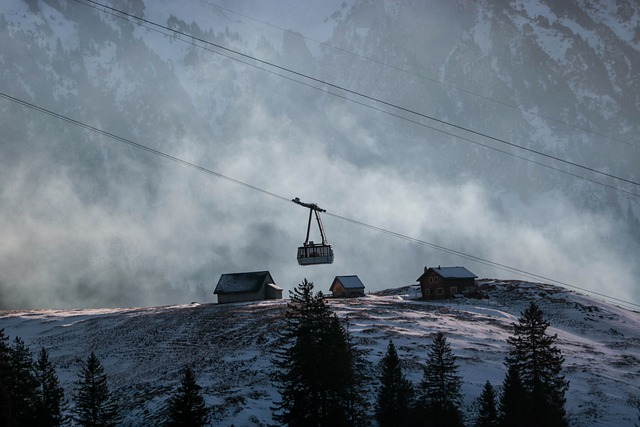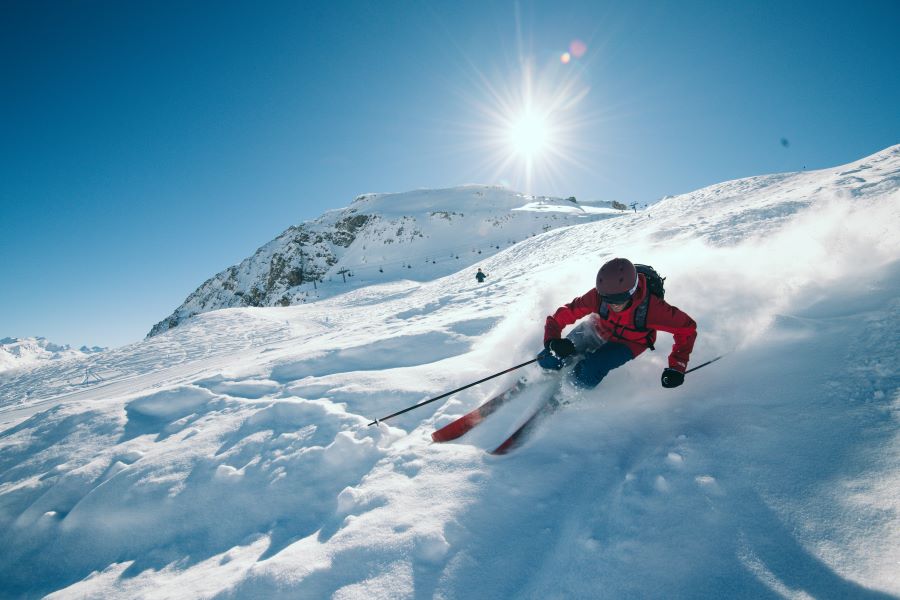
No matter whether you are a beginner or an experienced skier, there is something for everyone at the East Coast's top resorts. Most have excellent kid's programming, making them ideal family getaways, and many offer great lessons for both children and adults.
Stowe (Vt.)
Stowe Mountain Resort in Vermont is the largest resort and offers some of the most difficult alpine skiing in the East. This is where you'll find New England-style glades and long, sustained fall lines, and the resort's top-notch ski school will help you hone your skills.
Sugarloaf in Maine
Located in the state's beautiful Lake Region, Sugarloaf is one of the best ski areas on the East Coast for beginners and advanced skiers alike. There are 22 trails that meet the needs of both beginner and seasoned skiers, and the Snowsports School offers lessons for children as young as three years old and up.

Okemo, Vermont
Okemo is a top East Coast ski destination for its family-friendly environment. It also boasts an excellent Snowsports School. The family-friendly resort has a childcare center for children 6 months to 4 year old. The base area offers many activities for all ages.
Loon Mountain New Hampshire
Loon's 116 runs have more than half the blue runs. Superpipe and terrain parks welcome snowboarders and freestyle skiers. The resort's Learning Terrain area is also a good place for beginners, and a base-area shuttle makes it easy to get around.
Attitash New Hampshire
Attitash is located halfway between North Conway, Bretton Woods and Attitash. It covers two mountains connected by 68 trails. The Ledges is the highest run in New Hampshire. You will find 200 acres of off-piste trails as well as glades here, making it one of New Hampshire's most challenging backcountry areas.
Mount Snow, New York
Mount Snow is a popular destination for skiers from New York City, Boston and other places. The mountain's highest chairlift is located in this charming New England town. There are many dining options and lodging options.

Mad River Valley in Massachusetts
Mad River Valley is not like other New England ski areas, which are surrounded with dense forests. Skiers and boarders in this resort have plenty of options with six terrain parks and an impressive telemark area. There's also a halfpipe.
Crested Butte, Colorado
Crested Butte was once a coal mining community but has become a ski destination. Summit County doesn't have the same number of visitors. But it has all the elements of a great vacation: cozy accommodations, delicious food, and plenty of off-mountain activities like snow tubing.
Thunder Ridge, Vermont
Thunder Ridge, East Coast's most popular resort, offers a fun and challenging kid's program and an enthusiastic staff. There are also trails for beginners and experienced skiers. The Snowsports School is a top-rated ski school that will help you improve your skiing skills. Lessons are available daily or for a longer period of time for children as young at three.
FAQ
What amount of luggage should I bring?
The length of your trip will determine how much luggage you need. Hand baggage is usually limited to 20 kg if you travel by plane. You will need more space if you travel by train or bus.
When you arrive at the airport, you will be given a form to fill out with details of your flight. This form will ask for information such as your baggage weight and if you require assistance to check them in.
Before you leave for work, make sure to check it. If you don’t check it, you might end up waiting hours for everyone else to do so.
It's best to travel light, as you never know when something might happen. For example, if your bag gets lost, you won't have anything to wear.
How can I travel light and how do I get there?
There is no right answer when packing for your trip. These are some suggestions to help you pick the right items to take on your trip.
-
Only bring what you need.
-
You should only pack what you actually wear.
-
Don't overload yourself with too many items.
-
Check your suitcase for space.
-
You should always double-check that everything is packed.
-
Get free storage
-
Use reusable water containers instead of buying bottled water.
-
A backpack is better than a luggage.
-
Take public transport if possible and instead walk or bike.
-
Select the right bag size
-
Be careful not to carry large items.
-
Be prepared for any eventuality.
-
Do not leave anything behind
What documents should I keep handy when traveling?
You can always access important documents while you are on the road by keeping copies at home. You may also want to consider keeping copies of your passport, driver's license, and other official identification cards and any credit card information you might need if you plan to use an ATM machine.
It is a good idea if you have a photocopy your passport so that it can be used in the event of a need.
Do not forget to include copies and reservation confirmations. These will help you to remember where you are and what you want to see.
You should also keep a copy your hotel reservation and flight ticket details. You will be able to reach someone back home if there is any trouble.
Finally, it's always a good idea not to leave anything valuable unattended. Make sure you have a place to store your valuables, such as a money belt or in your luggage.
Ensure you check your baggage before leaving to avoid losing expensive items.
Keep in mind: It is safer to keep it simple than to plan everything.
So just relax and enjoy your journey!
Statistics
- They're also likely to offer babysitting services, in case you'd like to have dinner one night after 7 p.m. (travelandleisure.com)
- Pack sweaters, jackets, and underwear in reusable compression bags creating up to 75% more space in your luggage. (wikihow.com)
- Alcoholic beverages with more than 24% but not more than 70% alcohol are limited in checked bags to 5 liters (1.3 gallons) per passenger and must be in unopened retail packaging. (tsa.gov)
- Alcoholic beverages with 24% alcohol or less are not subject to limitations in checked bags. (tsa.gov)
- No Checked Bags: No Alcoholic beverages with more than 70% alcohol (over 140 proof), including grain alcohol and 151 proof rum. (tsa.gov)
External Links
How To
How to plan your next getaway
Planning a trip requires many things, such as booking flights and hotels, car rentals, activities, and so on. It involves important considerations like your budget, destination choice, weather forecast, etc.
These are the things you should keep in mind as you plan your next vacation.
To ensure you get everything right, we have created a step-by-step guide to help you plan your next vacation. This guide was compiled based upon customer feedback and experience. This guide will help you plan your next vacation easily.
Steps:
-
Plan your Budget - This is the most important step to take when planning for a trip. Before you start to think about where to go or what to do, it is important to determine how much money you have available for your trip. If you don’t have enough money, it might be necessary to cancel your trip.
-
Book Your Flights - After determining your budget, the first thing you should do is book your tickets. Be sure to get the lowest price flight deal. In addition, make sure you check whether there are any special offers for certain seasons. These deals can save you lots of money.
-
Your Destination - Now that you've booked your plane ticket, it's time to choose where you want. Multiple factors will play a role in choosing the destination you choose, such as location (wherever you are), climate (what season), culture (how friendly and affordable it is), cost (how affordable it can be) and cost.
-
Locate Accommodations – After you've chosen your destination, you need to locate accommodations. You have many accommodation options, from hostels and luxury suites to choose from. Choosing the right type of accommodation depends on your needs and preferences. A hotel is not the best choice if you want to be close to the city centre. On the other hand, if you prefer quiet places away from crowds, a homestay may suit your requirements better.
-
Select Activities and Attractions. Now, after you've selected your accommodation it is time to pick the activities or attractions that you would like to add to your itinerary. Depending upon the length of your stay you have two options: choose just a few activities, or add many more to your itinerary.
-
You can now determine your schedule. It is important to stick to a schedule in order for maximum enjoyment of your trip. It's okay to be flexible and enjoy your vacation more.
-
Make an itinerary - This is where you include all details about your trip. You should list all the details, from flights to accommodation to activities to restaurants.
-
Research online - Make sure you do your research before you leave for your trip. Review and read testimonials to learn what travelers have to say about a destination. This will allow you to plan your trip accordingly.
-
Be Light - Don't pack too much. This is the biggest mistake people make when packing. Try to bring just three sets of clothes instead of five. You should bring clothing that suits the conditions.
-
Always be prepared Be prepared before you set off on your trip. It's not a good idea to spend time looking for documents while you are still on the move.